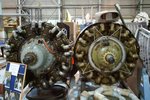renrich
Chief Master Sergeant
Chris hits the nail on the head with his last statement. To me, still, in order to be judged as a significant AC in a war, an airplane needs to be put into production, with bugs ironed out and have a significant combat record. Either that or be a revolutionary design like the ME262. I have asked this question several times and no answer so this time I am asking Soren, the big kahuna on the wunderflieger, TA152, how many TAs were ever operational and how many kills did it have and if possible, against what AC. As far as a "big" radial engine is concerned like the R2800, well, you take that engine, stick it in as small an airframe as possible and you have an airplane like a Corsair, that can carry a lot of fuel, get off the ground fast, is very survivable, can carry a big ordnance load and has a lot of stretch in the design. Or you take the same engine and stick it into an even smaller airframe and have a shorter ranged fighter with a smaller ordnance load but up to about 20000 feet can outperform any piston engined fighter ever built, the F8F.

